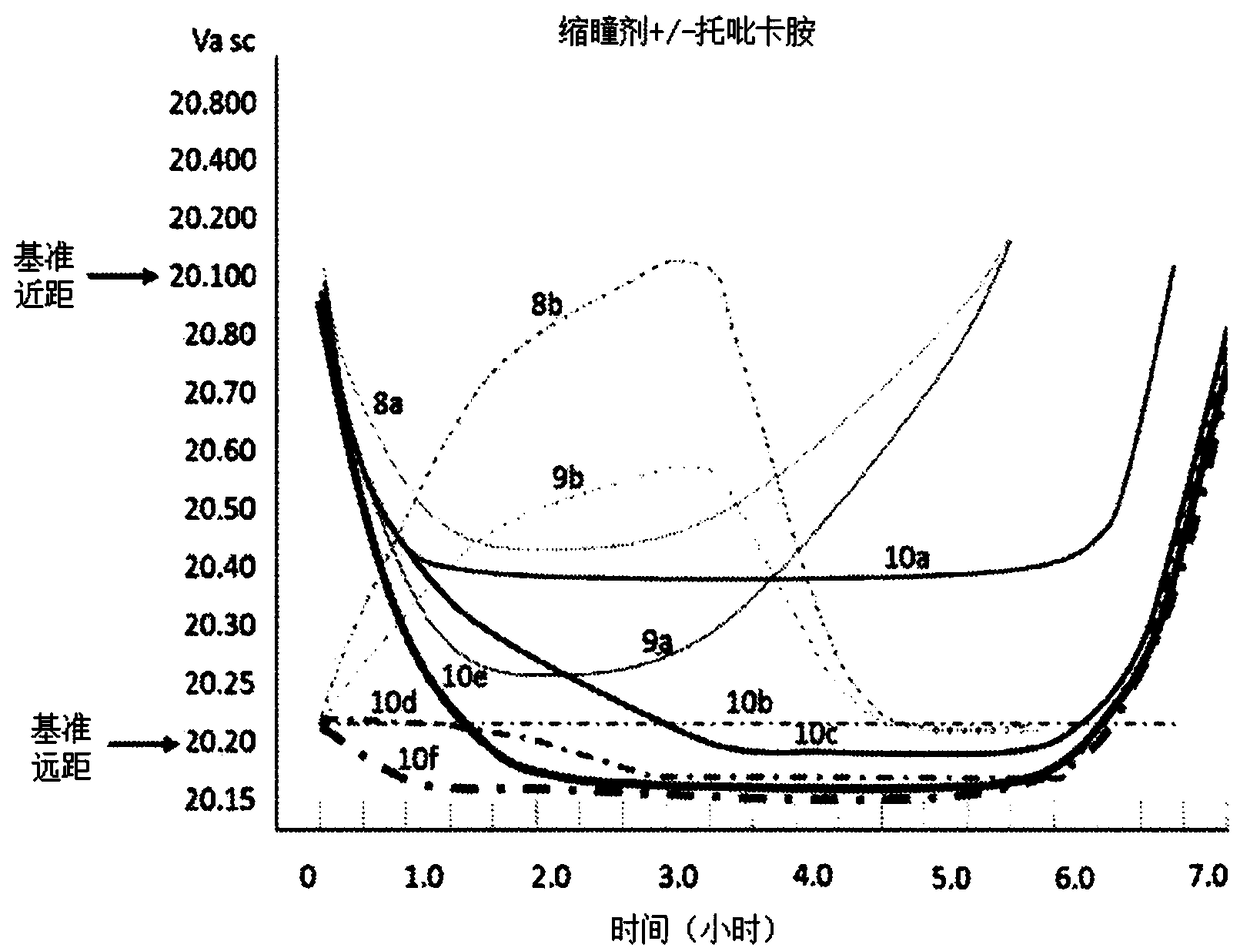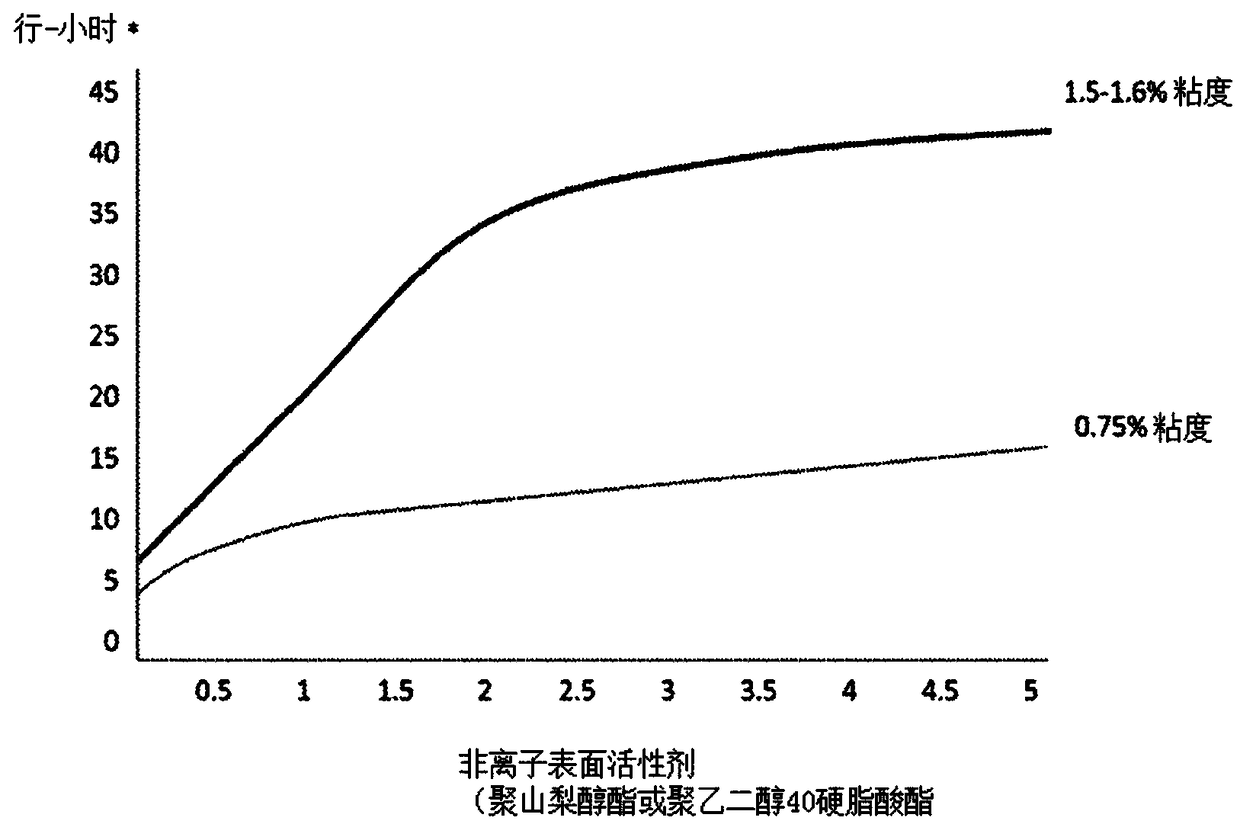Compositions and methods for the treatment of presbyopia
A kind of composition, technology of hyperopia, applied in some more preferred implementation areas, capable of solving problems such as adjustment-induced distance blur
- Summary
- Abstract
- Description
- Claims
- Application Information
AI Technical Summary
Problems solved by technology
Method used
Image
Examples
Embodiment approach
[0212] In one embodiment, the ophthalmic composition comprises:
[0213] Aceclidinium in a concentration of about 1.75% w / v; and
[0214] Mannitol at a concentration of about 2.5% w / v.
[0215] In another embodiment, the ophthalmic composition comprises:
[0216] Aceclidinium in a concentration of about 1.75% w / v;
[0217] Mannitol in a concentration of about 2.5% w / v; and
[0218] Tropicamide at a concentration of about 0.02% w / v.
[0219] In another embodiment, the ophthalmic composition comprises:
[0220] Aceclidinium in a concentration of about 1.75% w / v;
[0221] Mannitol in a concentration of about 2.5% w / v;
[0222] polysorbate 80 at a concentration of about 5.0% w / v;
[0223] Carboxymethylcellulose at a concentration of about 1.4% w / v;
[0224] BAK at a concentration of about 0.015% w / v; and
[0225] Phosphate buffer at a concentration of about 3 mM,
[0226] Wherein, the pH is about 5.
[0227] In another embodiment, the ophthalmic composition comprises: ...
Embodiment 1
[0489] The effect of embodiment 1 acecidine on the visual acuity of 47 to 67 years old subjects
[0490] Table 1 shows the effect on the near focusing ability of hyperopic subjects before and after ophthalmic administration of acecidine-containing compositions. Each composition included aceclidinium at the concentrations indicated and 5.5% w / v HP[beta]CD, 0.75% w / v CMC, 0.25% w / v NaCl and 0.01% w / v BAK. Additionally, the composition administered to subjects 4 and 5 included 0.125% w / v tropicamide. Because aceclidinium is an enantiomer, clinical effectiveness varies with the ratio. For the current study, a nearly exact 50:50 ratio of stereoisomers was measured, as best determined by polarimetry.
[0491] Table 1. The effect of acecidine on the visual acuity of patients with hyperopia
[0492]
[0493] As can be seen from Table 1, all subjects had poorer than perfect near vision (20.20) for both left and right eyes (objects 15 inches from eye) and most subjects did not hav...
Embodiment 2
[0494] The concentration influence of the concentration of embodiment 2 aceclidine and tropicamide
[0495] Table 2: Concentration Effect of Acecidine and Tropicamide Concentrations
[0496]
[0497] Abbreviations: (C) corrected visual acuity, (m) minutes, (hr) hours, mm millimeters, BD baseline distance vision; BN baseline near vision, BP baseline pupil size, OD right eye; OS indicates the left eye, and OU indicates both eyes.
[0498] All percentages are w / v. "pt" reflects the size of the printed material, 4 equals 20 / 20 vision, and 3 equals 20 / 15 vision.
[0499] "Time" refers to the duration of action.
[0500] As can be seen from Table 2, acecidine at a concentration of at least 1.1% w / v was able to reduce the pupil size to 1.63 mm after 1 hour of topical instillation, which resulted in corrected near and distance vision for at least 10 hours. Reducing the concentration of aceclidinium to 0.75% w / v (Formulation #3) reduced the miotic effect to 2.0-2.5 mm after 1 ho...
PUM
 Login to View More
Login to View More Abstract
Description
Claims
Application Information
 Login to View More
Login to View More - R&D
- Intellectual Property
- Life Sciences
- Materials
- Tech Scout
- Unparalleled Data Quality
- Higher Quality Content
- 60% Fewer Hallucinations
Browse by: Latest US Patents, China's latest patents, Technical Efficacy Thesaurus, Application Domain, Technology Topic, Popular Technical Reports.
© 2025 PatSnap. All rights reserved.Legal|Privacy policy|Modern Slavery Act Transparency Statement|Sitemap|About US| Contact US: help@patsnap.com



